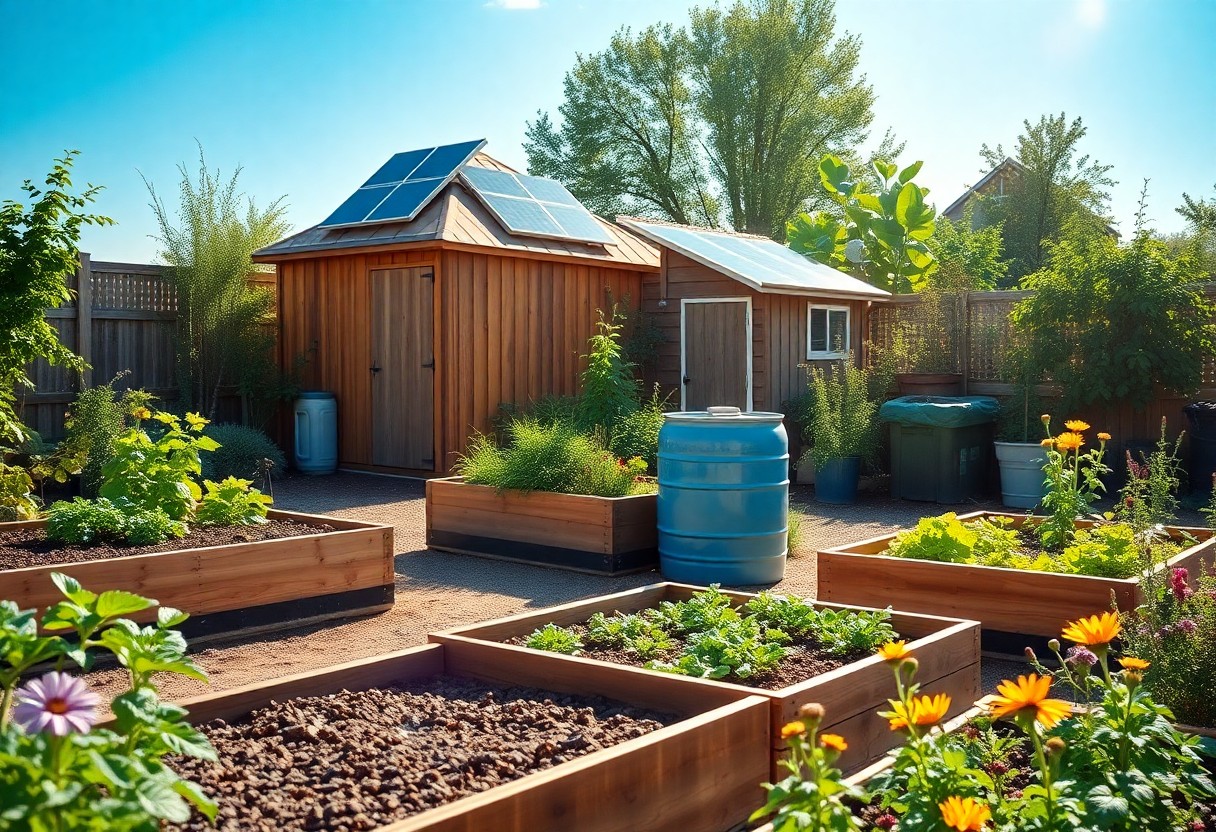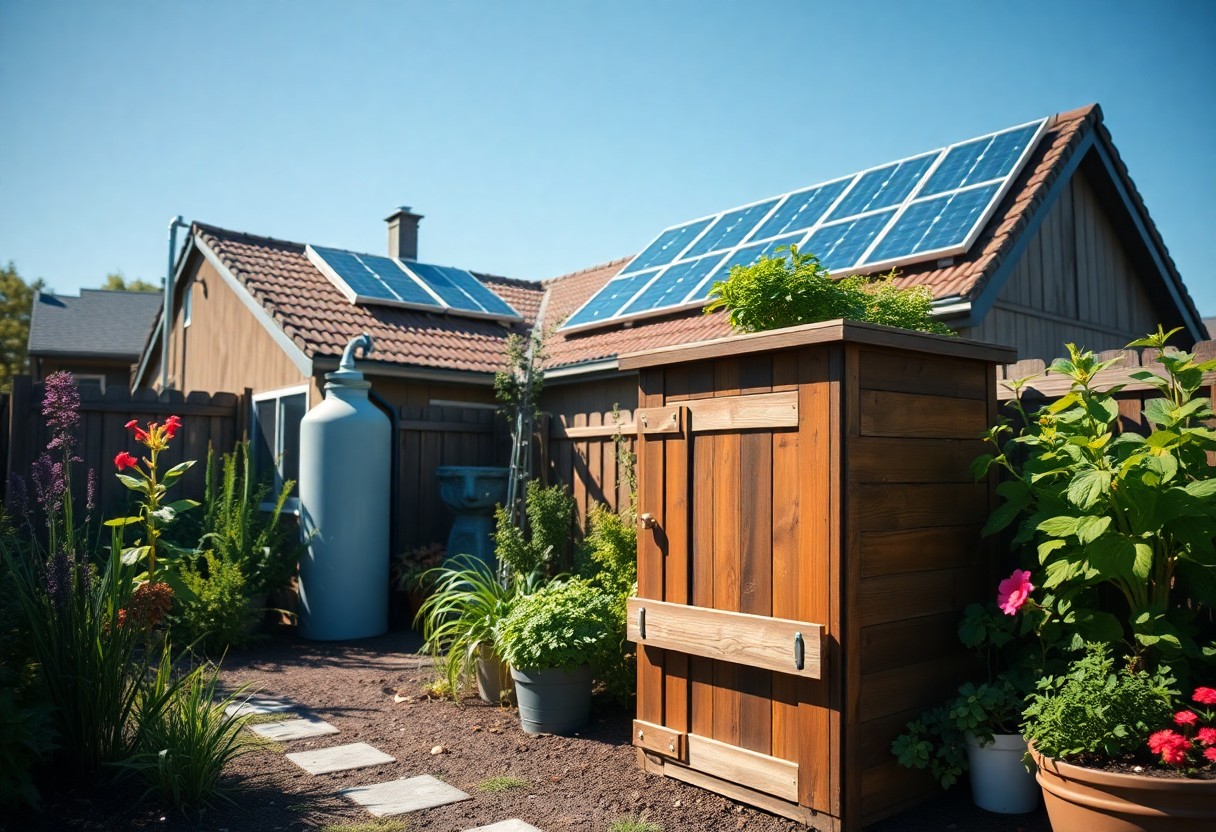Most people overlook the impact their daily choices have on the environment, but you can shape a healthier planet by adopting simple, eco-friendly habits. From reducing waste to conserving energy, your actions can lead to significant positive changes not just for yourself, but for future generations. By making informed decisions and embracing sustainability, you can transform your lifestyle into one that nurtures both your well-being and the earth.

Key Takeaways:
- Opt for reusable products to minimize waste, such as water bottles and shopping bags.
- Implement energy-saving practices, like using LED bulbs and unplugging devices when not in use.
- Choose locally-sourced and organic foods to support sustainable agriculture and reduce carbon footprint.
- Adopt a plant-based diet or incorporate more meatless meals to lower environmental impact.
- Practice mindful consumption by evaluating needs before making purchases and opting for eco-friendly brands.
Rethinking Consumption Habits
The Impact of Mindful Purchasing
Mindful purchasing requires you to thoroughly evaluate needs versus wants. By assessing whether an item adds genuine value to your life or simply satisfies a fleeting desire, you can make more informed choices. For instance, opting for quality over quantity leads to fewer purchases and ensures that what you buy is durable and sustainable, ultimately reducing your ecological footprint. Studies reveal that consumers who prioritize mindful purchasing habits often reduce their expenses while contributing to a more sustainable economy.
By shifting your mindset towards supporting local businesses and brands committed to ethical practices, you reinforce a cycle of sustainability. For example, purchasing second-hand clothing not only cuts down on textile waste but also supports local thrift stores, which often funnel profits back into your community. The ripple effect of your choices can create significant changes, encouraging brands to prioritize sustainability with increased demand for eco-friendly products.
Strategies for Reducing Waste
The first step in reducing waste involves understanding your consumption patterns and recognizing opportunities for change. Start by implementing a “one in, one out” policy, where for every new item you acquire, you let go of another. This approach limits excess and encourages thoughtful consideration before a purchase. Next, embrace reusable options, such as cloth bags and water bottles, which significantly cut down on single-use plastics. Statistics show that by switching to reusables, you can prevent countless items from ending up in landfills each year.
Consider adopting a zero-waste mindset in your daily routines. You can easily incorporate practices such as composting food scraps, which diverts organic waste from landfills and enriches your garden soil. Explore DIY solutions for traditional cleaning and beauty products, reducing reliance on commercially packaged goods that contribute to plastic waste. By making small, thoughtful changes in your life, the cumulative effect can lead to a substantial reduction in your environmental impact.
Sustainable Transportation Choices
The Benefits of Commuting Green
Choosing sustainable transportation methods offers significant environmental benefits. By opting for public transit, biking, or walking, you can reduce your carbon footprint substantially. For instance, taking public transportation instead of driving can cut greenhouse gas emissions by up to 45% per mile. Furthermore, you not only contribute to cleaner air but also relieve urban congestion, making cities more livable and accessible.
Cost savings are another compelling reason to embrace green commuting. Public transit often costs a fraction of car ownership, eliminating expenses related to fuel, insurance, and maintenance. For example, the average annual cost of owning a car can exceed $9,000, while commuting via bus or train can keep transportation costs under $1,000 annually. This shift not only benefits your wallet but also enhances your overall quality of life.
Exploring Alternatives to Car Ownership
Alternatives to traditional car ownership are increasingly viable, thanks to innovations in shared mobility services. Car-sharing platforms and ride-sharing apps provide on-demand access to vehicles without the responsibilities of ownership, allowing you to drive only when necessary. Many cities have also enhanced their bike-sharing systems, offering electric bike options that make commuting even easier and more appealing.
Additionally, the rise of electric scooters and dedicated urban cycling paths adds more layers of convenience. With research indicating that over 50% of car trips are less than three miles, it’s clear that exploring these alternatives can drastically reduce reliance on personal vehicles. By embracing these options, you not only promote environmental sustainability but also enjoy a more flexible and adaptable lifestyle.
As you consider alternatives to car ownership, think about how often you truly need a vehicle. Substituting car trips with public transport or using local services can save money and time while fostering a sense of community. You might discover that a combination of cycling, walking, and public transportation fulfills most of your travel needs, making personal car ownership an unnecessary expense.

Eco-Conscious Home Practices
Energy Efficiency: Simple Changes that Matter
Implementing energy-efficient practices in your home can lead to substantial savings and a lower carbon footprint. Consider replacing traditional incandescent bulbs with LED alternatives, which use up to 75% less energy and last significantly longer. Installing programmable thermostats to optimize heating and cooling schedules ensures that energy is not wasted when you’re not home. Additionally, sealing drafts around windows and doors can reduce heating costs by up to 20% while keeping your living space comfortable.
Investing in Energy Star-rated appliances further enhances your home’s energy efficiency. These appliances are independently certified to save energy without sacrificing performance. Small changes, such as unplugging chargers and electronics when not in use, can also contribute to energy conservation. For more extensive ideas, check out 40 Ways to Be More Eco Friendly in 2025.
Sustainable Materials for Home Renovations
Choosing sustainable materials for home renovations not only reduces environmental impact but also enhances the quality and lifespan of your living space. Opt for bamboo flooring, which is renewable and fast-growing, or reclaimed wood that gives character while embodying a commitment to sustainability. Recycled materials, such as glass countertops and metal roofing, can transform your home while diverting waste from landfills. Additionally, low-VOC paints and finishes improve indoor air quality, ensuring a healthier home environment.
Exploring sustainable options doesn’t stop at materials. Seek out suppliers who prioritize ethical sourcing and transparency in their production processes. Researching your choices can lead to beautiful, sustainable renovations that not only look great but also affirm your commitment to eco-friendly living.
Greening Your Diet
Benefits of Local and Seasonal Eating
Local and seasonal eating significantly reduces your carbon footprint. By choosing foods that are grown in your area and harvested during their natural season, you cut down on the environmental costs associated with long-distance transportation and storage. For example, berries in winter often require energy-intensive greenhouses or transport from warm climates. Instead, enjoy strawberries in summer when they are at their peak, ensuring fresher flavors and better nutrient profiles. Seasonal diets also encourage a more diverse meal plan, which is beneficial for both the environment and your health.
Selecting local produce supports your community’s economy and fosters sustainable farming practices. Farmers’ markets and local co-ops often prioritize organic and sustainable methods, equipping you with healthier options. Additionally, Five tips for living more sustainably can provide further insight into how your dietary choices can contribute positively to the planet.
Reducing Meat Consumption for Environmental Impact
Meat production is a significant contributor to greenhouse gas emissions, with the livestock sector responsible for approximately 14.5% of global emissions. Shifting towards a plant-based diet or reducing your meat intake can drastically lower your carbon footprint. For instance, replacing just one meal per week with a vegetarian option can save up to 500 pounds of CO2 emissions per year. You can experiment with meatless Mondays or incorporate more legumes and grains into your meals.
Beyond emissions, meat production consumes massive amounts of water and land resources. The United Nations suggests that a substantial reduction in meat consumption is crucial for combating climate change and preventing biodiversity loss. This doesn’t mean making meat entirely off-limits; instead, enjoy smaller portions or choose higher-quality, sustainably-raised options. Gradual changes in your diet can lead to lasting habits that benefit both your health and the environment.
Building Community Connections
The Role of Local Initiatives in Sustainability
Local initiatives play a vital role in fostering sustainable practices within your community. Engaging in community-supported agriculture (CSA) can not only enhance your access to fresh produce but also significantly reduce the carbon footprint associated with transportation. By supporting local farmers, you contribute to maintaining regional biodiversity and strengthen economic resilience. Initiatives like community gardens encourage collaboration and provide educational opportunities about sustainable horticulture, empowering you to cultivate your own food supply and develop a deeper connection with nature.
Programs focused on waste reduction, such as neighborhood composting or recycling drives, can also galvanize collective action towards sustainability. These initiatives demonstrate how small, localized efforts can lead to substantial environmental changes, as a united community can significantly diminish landfill contributions. Information about effective methods to incorporate sustainable practices can be found in resources like 12 Ways to Live More Sustainably, highlighting ways you can actively participate.
How to Foster a Culture of Eco-Friendliness
Cultivating a culture of eco-friendliness requires consistent efforts to engage and inspire those around you. Start by organizing workshops and events focused on sustainability topics, such as DIY upcycling or energy conservation techniques. By creating a platform for sharing knowledge, you empower individuals to adopt eco-friendly practices in their daily lives. Incorporating sustainability into local events, like clean-up days or tree-planting initiatives, not only enhances community morale but also exemplifies collective responsibility toward the environment.
Sharing personal stories of sustainable living can resonate deeply with your peers. When you showcase your efforts, such as reducing single-use plastics or embracing minimalism, it creates a ripple effect that encourages others to reflect on their lifestyle choices. By fostering open discussions about the benefits of an eco-conscious lifestyle, you help to normalize these practices and inspire a more significant shift in community attitudes towards sustainability.
To further enhance a culture of eco-friendliness, consider implementing reward systems that recognize and celebrate sustainable achievements within your community. Recognizing individuals and groups who make notable contributions to sustainability can motivate others to follow suit. You can create an awards program that highlights innovative projects or initiatives, reinforcing the idea that every contribution, no matter how small, is valuable in the larger context of environmental stewardship.
Summing up
On the whole, adopting a sustainable lifestyle involves conscious choices that impact both your life and the environment positively. By integrating eco-friendly practices into your daily routine—such as reducing single-use plastics, conserving water, and opting for local produce—you contribute to a larger movement towards sustainability. Each small action you take adds up, leading to significant change over time.
Ultimately, making environmentally responsible decisions is not just about the immediate benefits for yourself; it’s a commitment to future generations. As you implement these eco-friendly tips, you foster a mindset that prioritizes sustainability. This shift not only enhances your quality of life but also reinforces the importance of living in harmony with the planet for your own well-being and that of the Earth.
FAQ
Q: What are some simple changes I can make to reduce waste at home?
A: Start by using reusable bags, bottles, and containers. Compost food scraps, recycle whenever possible, and buy products with minimal or recyclable packaging. Consider switching to digital receipts and statements to cut down on paper use.
Q: How can I incorporate more plant-based meals into my diet?
A: Begin by designating one day a week as a plant-based day. Explore new recipes that highlight fruits, vegetables, legumes, and grains. Gradually replace some meat and dairy dishes with vegetarian alternatives to find options you enjoy.
Q: What eco-friendly products should I consider for cleaning my home?
A: Opt for biodegradable cleaning products, or create your own using vinegar, baking soda, and imperative oils. Look for brands that are environmentally certified and avoid single-use items by using washable cloths, brushes, and mops.
Q: How can I make my commute more sustainable?
A: Choose public transportation, bike, walk, or carpool whenever possible to decrease your carbon footprint. If driving is necessary, consider switching to an electric or hybrid vehicle and maintain it regularly to improve fuel efficiency.
Q: What are effective ways to conserve energy in my home?
A: Use energy-efficient appliances and LED bulbs. Unplug devices when not in use, and utilize smart power strips. Seal windows and doors to prevent drafts, and consider using a programmable thermostat to optimize heating and cooling.





0 Comments